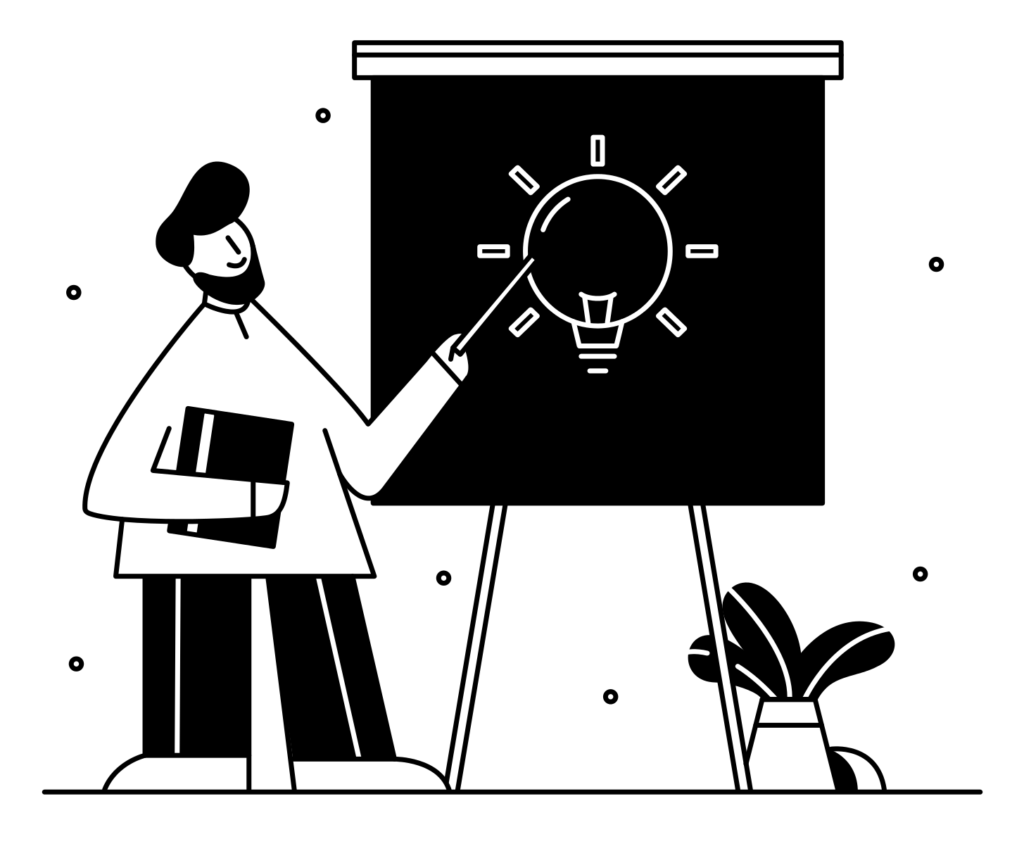
It’s no secret that the SaaS space is crowded.
Heck, the average business is juggling hundreds of apps at any given time.
And so anything software companies can do to prove their value is a plus.
That’s why SaaS case studies are so important.
Fact: case studies are cited as the most effective type of content for influencing B2B buying decisions. Case studies are crucial for not only helping SaaS companies stand out from the crowd but also answer their potential customers’ most pressing questions.
Want to see what compelling customer stories look like in the wild? Check out the seven SaaS case study examples below.
1. Gong
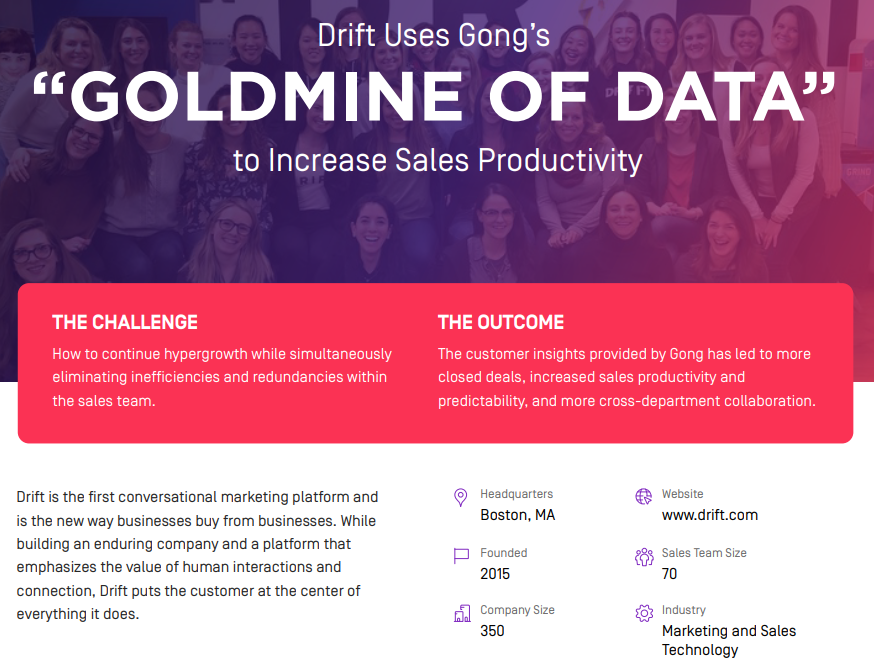
“What does this case study do well?”
- Immediately highlights the client’s key challenge and how Gong’s product managed to solve it. The specific, positive outcomes (“more closed deals,” “increased sales productivity” and “more cross-department collaboration”) speak for themselves.
- The format is scannable and flows seamlessly, broken up by colorful visuals, client quotes and a product screenshot.
- The case study reads like an actual narrative, brimming with conversational copy and client quotes to keep the report from feeling too “matter of fact.”
Much like SaaS blog writing doesn’t have to be boring, case studies shouldn’t be a total snooze-fest. This report proves exactly that.
2. Zylo
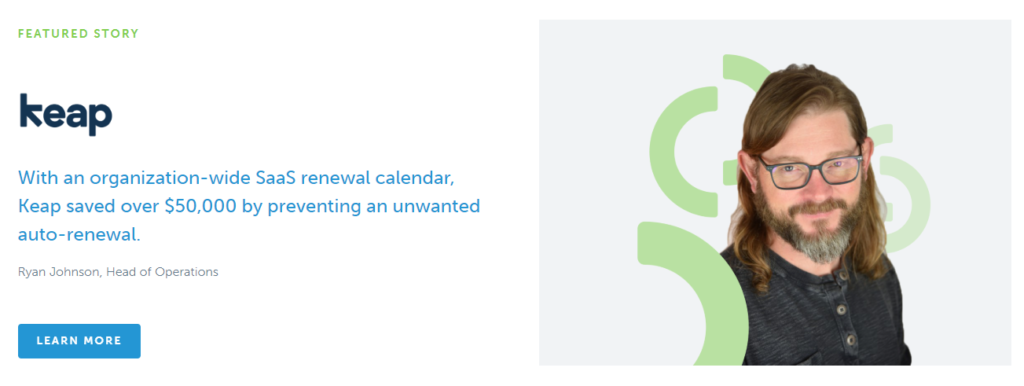
“What does this case study do well?”
- Incorporates a brief video to summarize the study’s key points and provide real-world context to the client’s challenges. This is especially important for more “technical” or complicated SaaS products.
- It’s brief! In addition to the provided video, the tried-and-tested “Challenge, Solution, Results” format helps keep this study short and sweet.
- The study’s headline is compelling. From its title alone, the study highlights how a specific feature (Zylo’s SaaS renewal calendar) addressed a specific pain point (unwanted auto-renewals) and resulted in a major benefit ($50,000+ saved) for the client.
Clocking in at under 500 words, this is among the shortest of our SaaS study examples. That said, the study’s brevity is one of its key strengths.
3. Heap
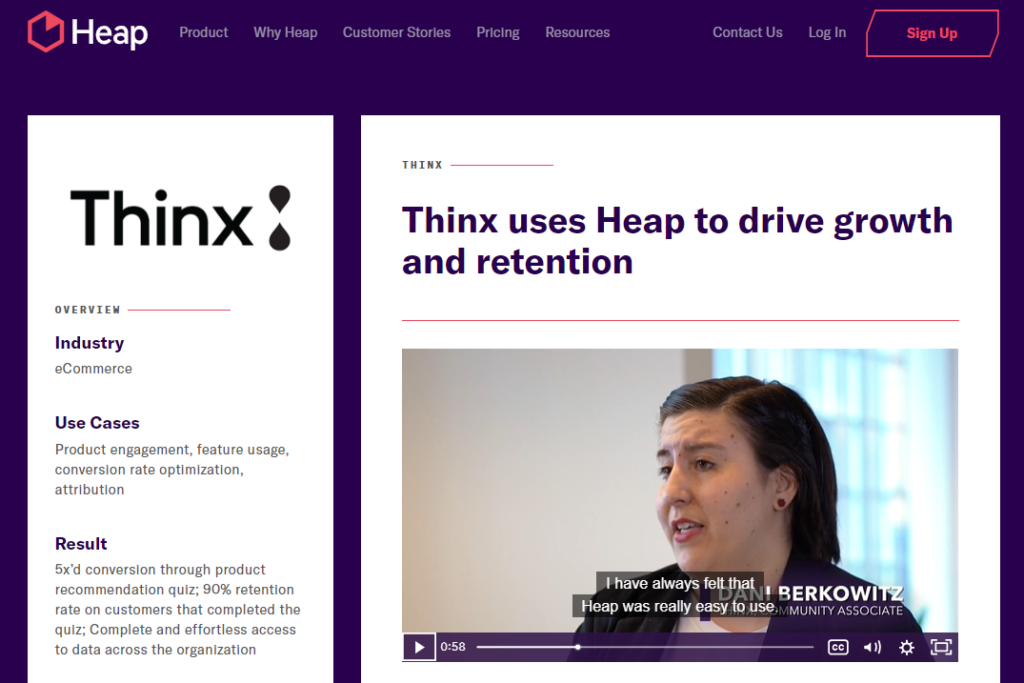
“What does this case study do well?”
- The study’s format gives you pretty much everything you need above-the-fold, including the client’s results and a well-produced video.
- Highlights impressive data points and outcomes immediately (“5xd conversion” and “90% retention rate”).
- Includes quotes from multiple employees to showcase how Heap’s service helps clients organization-wide (rather than just a single department).
4. Databox
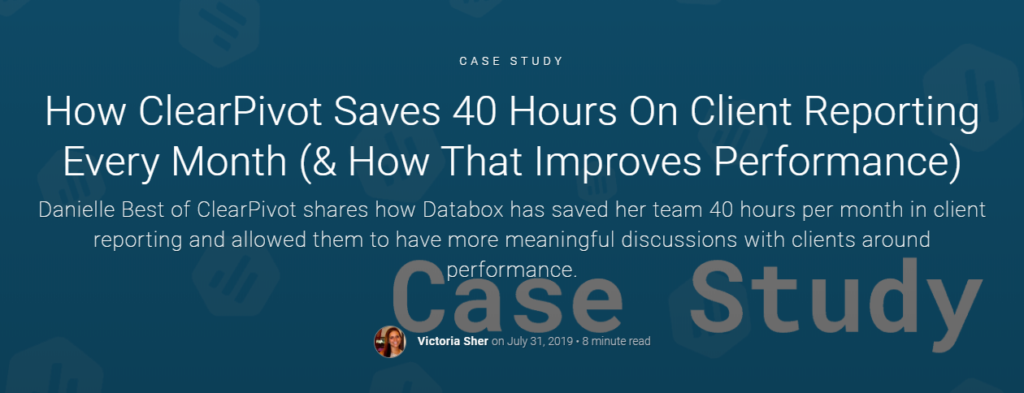
“What does this case study do well?”
- The case study’s title is striking, putting a massively positive client outcome (saving 40 hours per week) front-and-center.
- It feels human! The fact that the study comes from a back-and-forth client conversation not only humanizes Databox as a brand but also makes their product seem more tangible.
- The study’s unique format (a blog post that provides both a video and transcript) is fair game for prospects whether they prefer to consume content via viewing or reading. This likewise highlights how you might integrate case studies into your SaaS content strategy.
5. FunnelCake
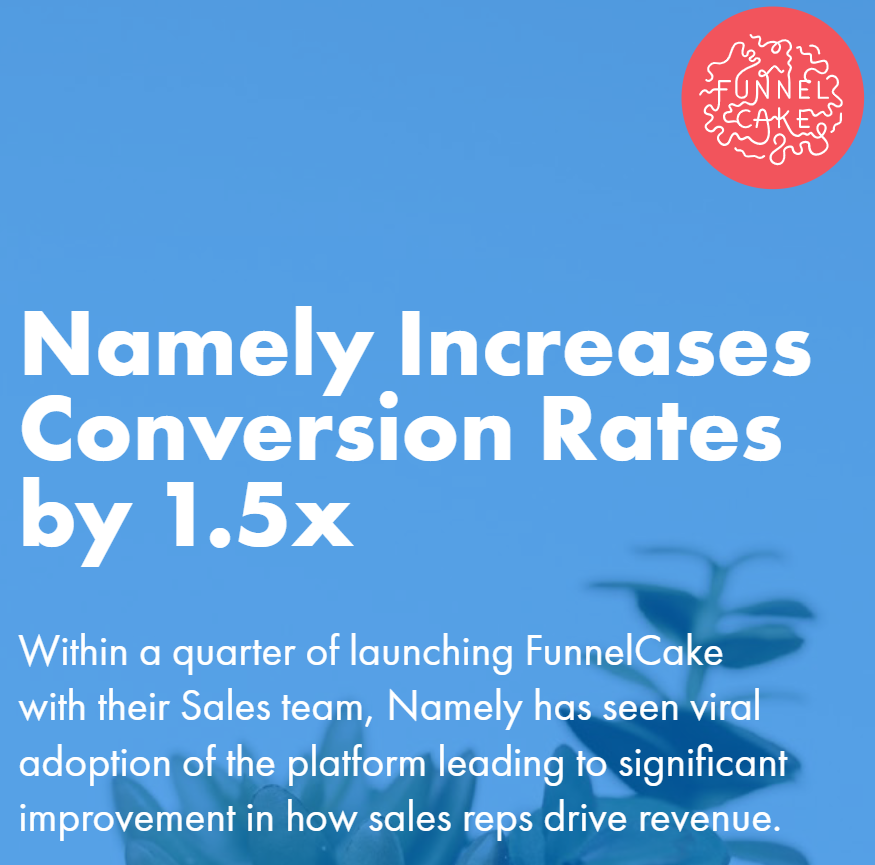
“What does this case study do well?”
- The study’s headline does double-duty of showcasing awesome results (1.5x conversion rates) and how quickly those results came (“Within a quarter of launching”).
- Provides multiple hard-hitting client quotes to drive home the product’s effectiveness (“finding value in the first week”).
- Couples its bold claims with specific data points (“100% adoption in the first 30 days”).
6. Chili Piper
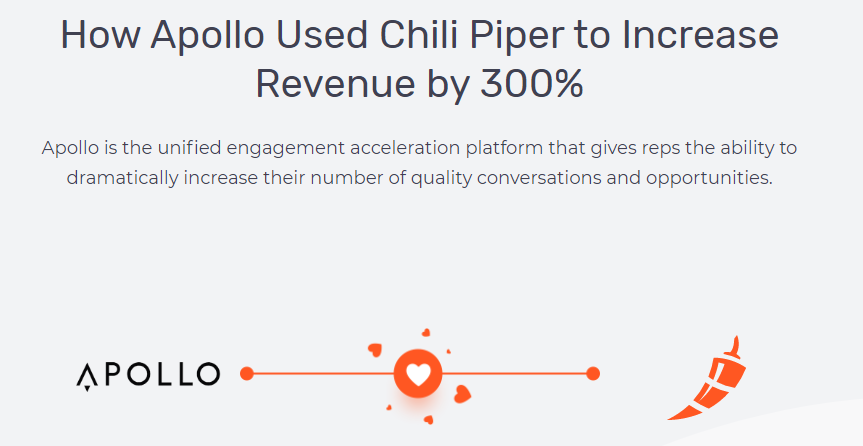
“What does this case study do well?”
- Major outcomes are highlighted throughout the case study (including a “5x increase in inbound meeting booked” and the “300% revenue increase” referenced in the title).
- The study uses the numbers above to hook the reader and then provide a brief breakdown of how those results came to be, moving us from Point A to Point B.
- Candid client video and quotes provide additional context and a personal touch to Chili Piper’s product.
7. Typeform
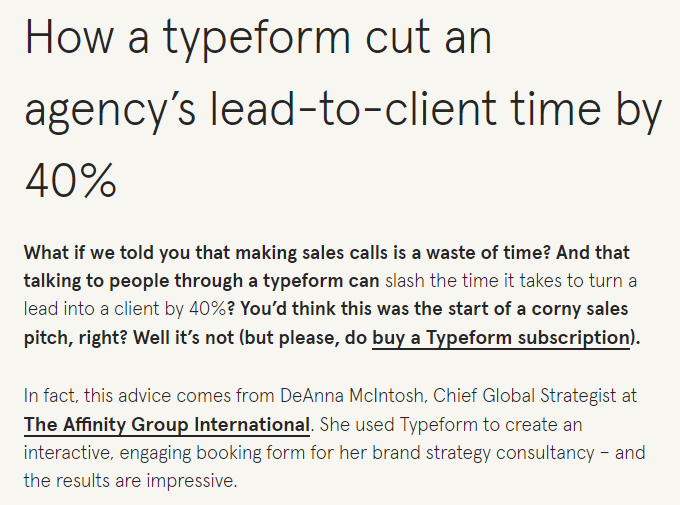
“What does this case study do well?”
- The study is presented as a hybrid between a customer success story and a how-to blog post for new users and existing clients. Again, case studies are a valuable part of your SaaS content marketing strategy.
- Incorporates actual client screenshots and highlights the specific steps to replicate their positive results, making Typeform’s product seem super actionable.
- Integrates glowing quotes from the client to showcase benefits.
“What do the best SaaS case study examples have in common?”
As proven by the examples above, there is no “right” or singular way to put together a SaaS case study.
That said, there are a few common threads between the reports above that companies should strive to stick to.
If you’re trying to figure out how to write a SaaS case study yourself, keep the principles below in mind.
Grab readers’ attention with specific numbers, figures and data points
Sure, phrases like “increased revenue” or “saved time” are enticing.
But coupling those phrases with actual numbers can help your case study pack a much-needed punch.
For example, “increased revenue” versus “increased MRR by $10,000” or “saved time” versus “saved 15 hours per week.”
See how that works? Using actual client numbers does double duty of grabbing your target audience’s attention while also proving to prospects that your service produces meaningful results.
Integrate visuals to illustrate your points and keep readers engaged
Fact: recent visual content statistics note that both videos and graphics help push people toward making purchasing decisions.
It’s telling that five of our seven SaaS case study examples include video, right?
From stylized quotes to product screenshots and client headshots, it’s crucial that your reports are more than just walls of text. Written case studies can definitely be effective, granted you stick to the principle of “show, don’t tell.”
Let your clients do the talking
Again, most SaaS case studies are basically client stories.
So don’t be shy about letting your clients sing your praises. You’d be surprised at what gems of social proof they’ll say totally unprompted.
The correlation between customer testimonials and higher conversions is well-documented. Note that many of the SaaS case study examples below draw heavily on direct client quotes or interview segments.
If nothing else, making your case studies client-centric makes sense and likewise means less work on your part.
Make your case study shareable
Fact: the typical B2B buying process involves between six and ten people.
And so anything you can do to make your case study shareable to multiple stakeholders is a smart move.
This again speaks to why so many SaaS case studies incorporate video or are formatted as succinct, scroll-friendly PDFs.
Beyond that, conversational language and a summary of key points can also make a report more shareable. In short, your case study should be accessible even to people who don’t have a deep knowledge of your product.
Which SaaS case study examples stand out to you?
SaaS providers have a ton of freedom when it comes to how they put together their case studies.
Want to keep it brief? Looking to take a deep dive into your product and its specific features? Go for it.
Hopefully these examples and best practices provided some insight into what makes a “good” case study in the software space.
Got any other SaaS case study examples I should totally check out? Let me know on Twitter, comment below or shoot me an email.
This post was last updated on 1/5/2021.
Great piece for me as a marketing analyst who is looking to learn more about the SaaS industry